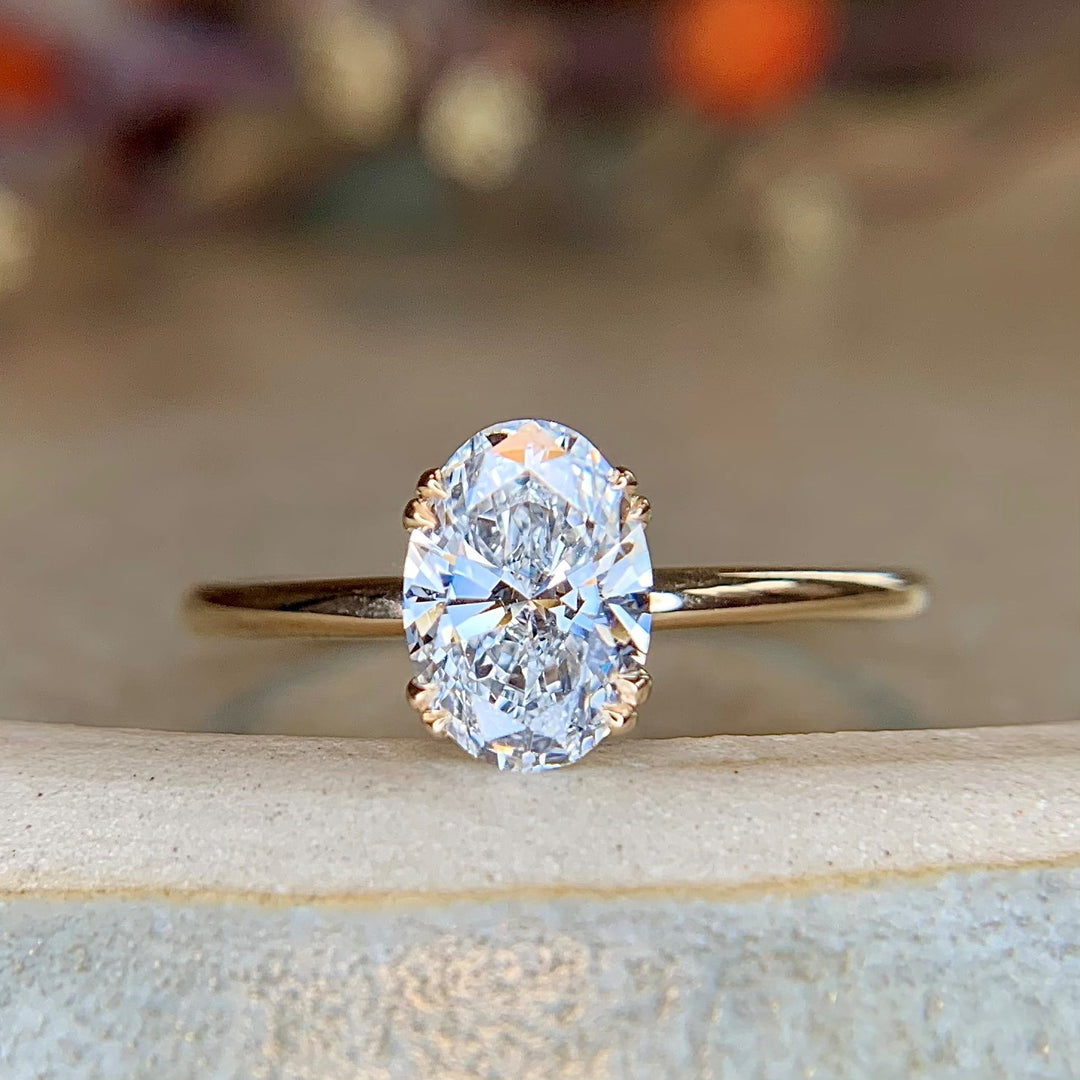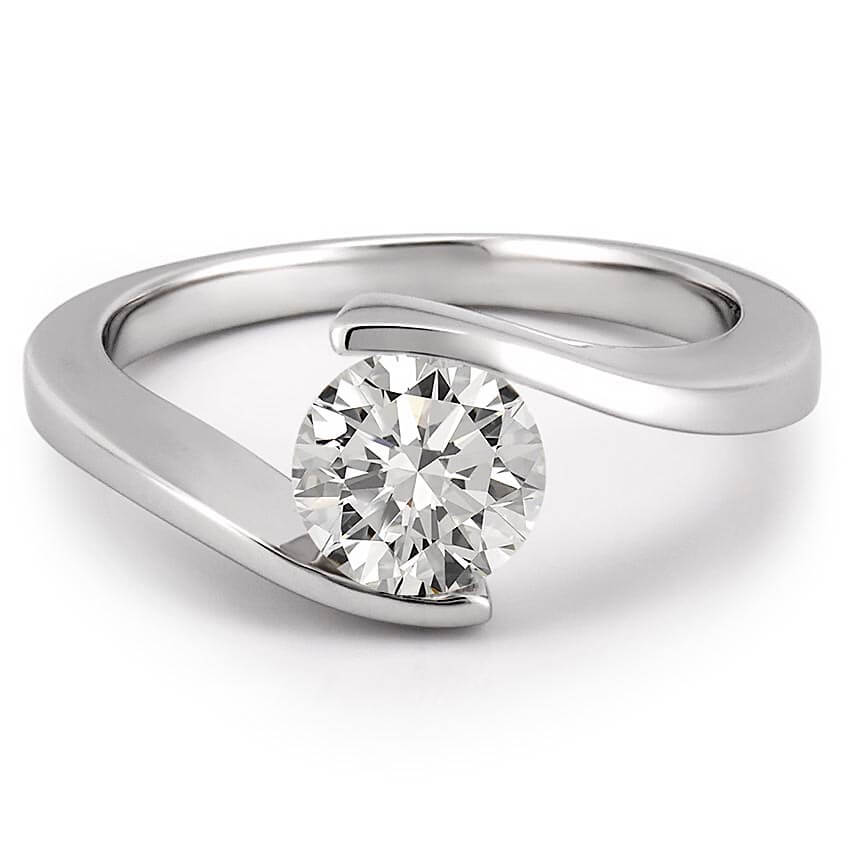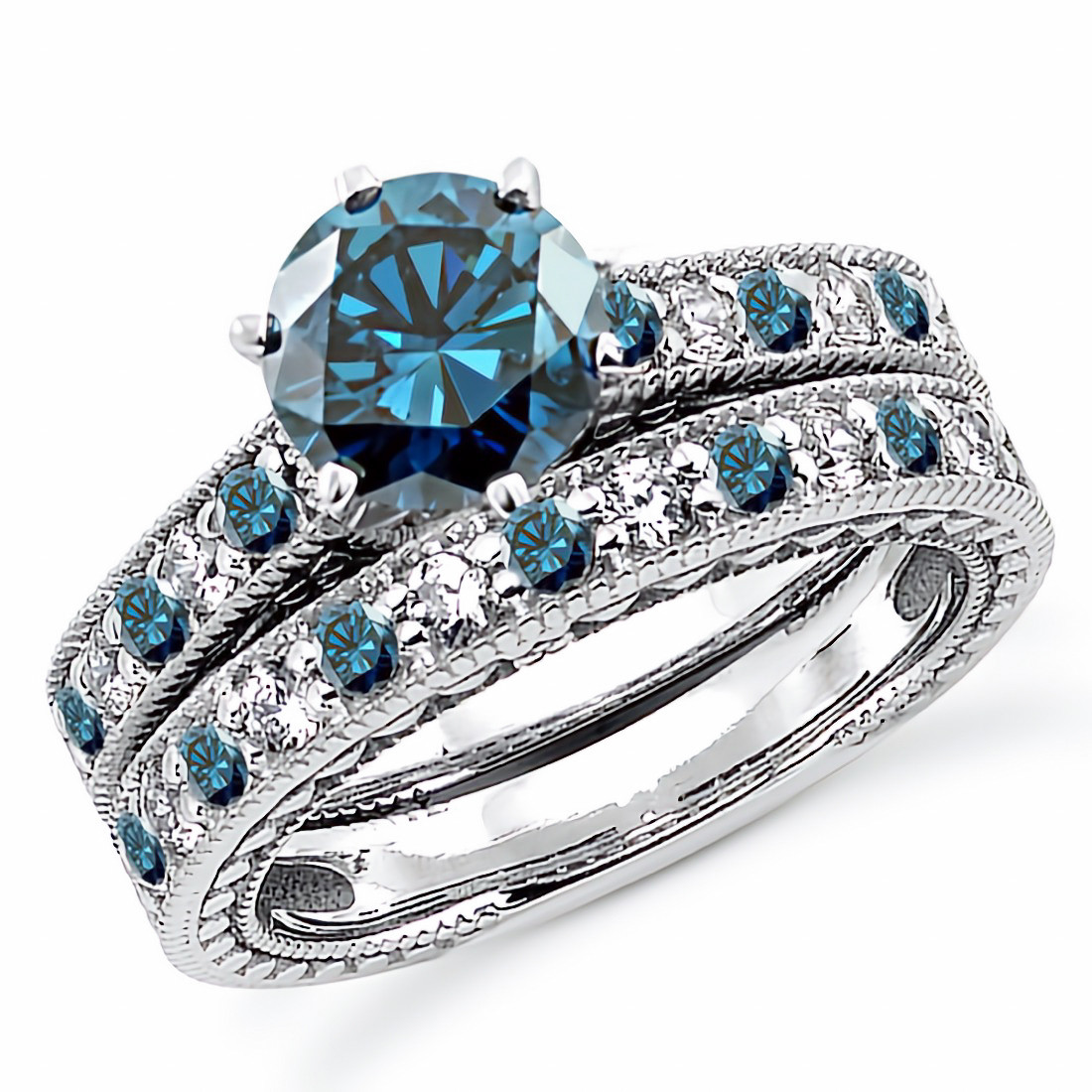Why Laboratory Grown Diamond Involvement Rings Are the Perfect Option for Eco-Conscious Couples
Lab-grown Diamond interaction rings present an engaging choice for couples that prioritize sustainability. These diamonds supply a striking option to conventional extracted rocks, substantially minimizing environmental damage. They are developed making use of advanced techniques that ensure both quality and sparkle. As understanding of moral sourcing expands, many couples are reevaluating their selections. What implications does this shift have for the future of the Diamond industry?

The Environmental Influence of Traditional Diamond Mining
Although Diamond mining has actually long been celebrated for its allure and reputation, the environmental consequences of standard mining methods are significantly worrying. The extraction of diamonds usually includes substantial land disruption, bring about deforestation and habitat loss for plenty of types. Additionally, the process eats large amounts of water, which can diminish local sources and negatively influence surrounding neighborhoods. Harmful chemicals utilized in mining operations can pollute neighboring water sources, better jeopardizing both human populations and wildlife.
The carbon impact linked with transporting extracted rubies adds to the total environmental toll. The heavy equipment and equipment needed for mining procedures contribute substantially to greenhouse gas emissions. As understanding of these concerns expands, lots of consumers are beginning to question the sustainability of conventional Diamond sourcing. This change in perspective highlights the urgent demand for more eco-friendly options, such as lab-grown rubies, which promise to decrease the eco-friendly impact while maintaining the beauty and worth of Diamond precious jewelry.
The Process of Producing Lab-Grown Diamonds
Lab-grown rubies are developed via two key methods: High Pressure High Temperature (HPHT) and Chemical Vapor Deposition (CVD) The HPHT process simulates the all-natural conditions under which diamonds form in the Earth's mantle. It entails subjecting carbon to severe stress and temperature level, leading to the crystallization of carbon atoms into Diamond frameworks. On the other hand, the CVD approach enables for the development of rubies in a controlled setting. This technique makes use of a gas combination containing carbon, which is energized to create plasma, making it possible for carbon atoms to deposit onto a substrate and grow layer by layer into Diamond crystals.
Both methods produce rubies that are chemically and physically the same to all-natural rubies - lab grown diamond engagement rings. The option of method commonly depends upon the preferred qualities and size of the last gem. This ingenious method to Diamond production not only offers a lasting choice however also permits better openness in the sourcing of products
Quality and Radiance of Lab-Grown Diamonds
While several might think that lab-grown diamonds vary in high quality from their all-natural counterparts, they in fact exhibit equivalent radiance and visual appeal. Lab-grown rubies are created utilizing advanced innovation that replicates the natural problems under which diamonds develop, causing stones that have identical physical and chemical homes. These rubies achieve the exact same remarkable clarity and shade grading as extracted diamonds, making them identical to the nude eye.
In regards to luster, lab-grown diamonds frequently display superior light performance due to their precision-cut facets. The extensive quality assurance throughout production warranties that these diamonds meet high criteria, enhancing their visual appeal. Furthermore, they are readily available in a variety of shapes and sizes, enabling pairs to discover the perfect ring to match their individual design. Inevitably, lab-grown rubies supply a beautiful combination of charm and top quality, making them an appealing option for engagement rings.
Ethical Factors To Consider in the Diamond Market
As customers become significantly knowledgeable about the ethical implications bordering Diamond sourcing, the conversation around the Diamond sector has shifted markedly. Problems about conflict rubies, often described as "blood rubies," have actually motivated telephone calls for greater openness and responsibility in mining practices. These diamonds are mined in battle zone and marketed to fund armed dispute, elevating serious ethical questions for consumers. In addition, the environmental effect of conventional Diamond mining has come under scrutiny, with issues such as habitat devastation and water air pollution frequently highlighted.
In action, many have turned to lab-grown diamonds as a much more honest option. These rocks are created in controlled atmospheres, getting rid of the dangers related to mining. Lab-grown diamonds appeal to customers seeking to make liable choices that straighten with their values. The growing need for ethical techniques remains to improve the Diamond industry, pressing for lasting and humane sourcing techniques.
Cost-Effectiveness of Lab-Grown Diamonds
Lab-grown rubies offer a compelling choice for click for more info consumers seeking cost-efficient engagement rings - lab grown diamond engagement rings. Valued considerably reduced than their natural equivalents, they provide exceptional worth for cash without sacrificing high quality or look. This affordability makes lab-grown diamonds an eye-catching alternative for budget-conscious couples
Lower Cost Factor
Several couples are discovering that choosing for lab-grown Diamond interaction rings can substantially lower their overall expenses without compromising top quality or elegance. These rubies usually set you back 30% to 50% less than their extracted equivalents, making them an eye-catching choice for budget-conscious consumers. The price advantage occurs from lower production expenses and a much more effective supply chain, which removes the expenses related to mining. Because of this, pairs can purchase bigger rocks or even more detailed setups, enhancing the overall visual More about the author of their rings. This cost not only enables a much more individualized option however also straightens with the worths of eco-conscious pairs who focus on sustainability while continuing to be economically wise. Lab-grown rubies offer an excellent blend of beauty and economy.
Value for Cash
The cost-effectiveness of lab-grown rubies expands beyond their first cost, providing remarkable worth for cash. Unlike natural rubies, lab-grown choices can be approximately 40% cheaper while maintaining the same physical and chemical residential or commercial properties. This cost enables my site pairs to buy bigger or higher-quality rocks without surpassing their budget plans. The resale value of lab-grown diamonds is gradually improving, making them a much more viable alternative for future monetary considerations. In addition, lab-grown diamonds usually include lower ecological and moral costs, giving couples with comfort. By selecting lab-grown rubies, eco-conscious couples not just save money yet likewise add to sustainable techniques, enhancing their total value proposal in the precious jewelry market.

Customization Options for Lab-Grown Involvement Rings
How can couples assure their engagement ring shows their one-of-a-kind romance? Customization options for lab-grown Diamond engagement rings offer a perfect service. Couples can select from numerous Diamond shapes, consisting of round, princess, or oblong, permitting them to select a style that resonates with their personal aesthetic.
Additionally, they can select the setting-- be it solitaire, halo, or vintage-inspired-- ensuring the ring complements the Diamond's brilliance. Steel selections, such as white gold, yellow gold, or climbed gold, better improve customization, providing to individual preferences.
Pairs can include meaningful inscriptions, adding an emotional touch that represents their bond. With these substantial personalization choices, lab-grown Diamond interaction rings not only embody a pair's love yet additionally show their values, making them an ideal choice for eco-conscious partnerships. Eventually, these rings come to be a true depiction of their unique journey with each other.
Regularly Asked Inquiries
How Do Lab-Grown Diamonds Contrast to All-natural Diamonds in Value?
Lab-grown diamonds commonly cost 20-40% much less than natural rubies, supplying comparable quality and look. Their reduced cost factor makes them an attractive alternative, specifically for budget-conscious customers looking for honest and sustainable options in fashion jewelry.

Are Lab-Grown Diamonds A Lot More Resilient Than Natural Diamonds?
Lab-grown diamonds possess the same physical and chemical residential properties as all-natural diamonds, including longevity. Both types score an ideal 10 on the Mohs scale, making certain that lab-grown rubies are similarly immune to damaging and damage.
Can Lab-Grown Diamonds Be Resold Easily?
Lab-grown diamonds can be resold, however their market demand varies compared to natural diamonds. While some buyers appreciate their ethical beginnings, others may choose natural choices, potentially impacting resale value and convenience of purchase.
What Are the Treatment Directions for Lab-Grown Diamonds?
Lab-grown rubies call for normal like preserve their radiance. Cleaning up with mild soap and warm water, using a soft brush, and preventing severe chemicals will help protect their sparkle and integrity for years to find.
Are There Any Accreditations for Lab-Grown Diamonds?
Lab-grown diamonds can be accredited by trustworthy companies such as the Gemological Institute of America (GIA) and the International Gemological Institute (IGI) These accreditations guarantee high quality, authenticity, and adherence to industry standards for lab-created gemstones.
Both approaches produce diamonds that are chemically and physically identical to all-natural diamonds. Lab-grown rubies are developed utilizing sophisticated innovation that duplicates the natural problems under which diamonds form, resulting in rocks that have similar physical and chemical homes. Lab-grown diamonds typically set you back 20-40% much less than natural rubies, supplying similar quality and appearance. Lab-grown diamonds have the exact same physical and chemical buildings as natural rubies, consisting of toughness. Lab-grown diamonds can be marketed, however their market demand differs contrasted to natural rubies.